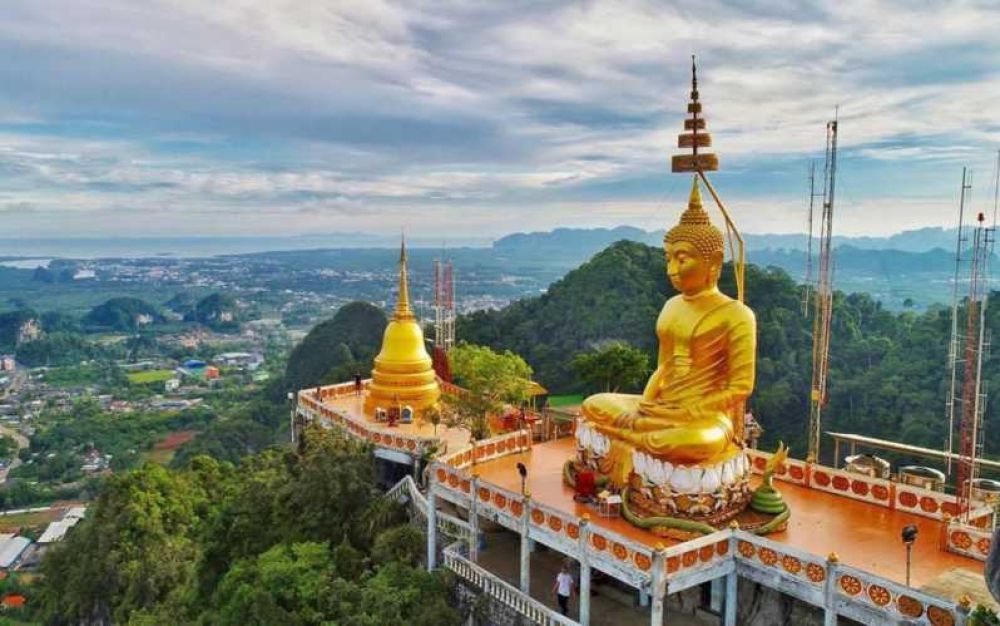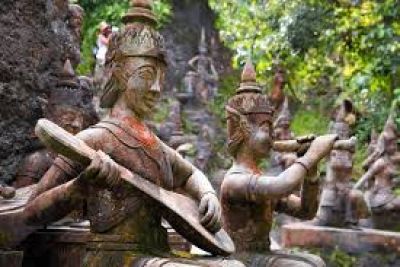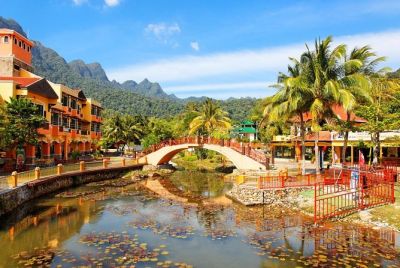History of Tourism at Tiger Cave Temple, Krabi, Thailand
The Tiger Cave Temple, also known as Wat Tham Suea, is one of Thailand's most sacred Buddhist sites and a popular tourist destination located in Krabi Province. The site is famed for its stunning natural beauty, its challenging ascent to the summit, and its religious significance. The history of tourism at Tiger Cave Temple has grown alongside the development of Krabi as a travel destination.
Early Beginnings
Initially visited by devout Buddhists and local pilgrims, the Tiger Cave Temple's tourism history began with individuals seeking spiritual enlightenment and natural solitude. The temple got its name from the tiger paw prints visible in the cave and the tiger-like rock formations in the surrounding limestone cliffs.
Rise in Popularity
In the late 20th century, as Thailand's international profile as a budget-friendly, exotic travel destination began to rise, the Tiger Cave Temple started attracting travelers from across the globe. By offering a unique combination of adventure, spirituality, and natural beauty, the site became a staple in travel itineraries for those visiting the region.
Current Tourism Trends
Adventurous Ascent
One of the key attractions at the Tiger Cave Temple is the strenuous climb of 1,237 steps to reach the summit, which provides panoramic views of the surrounding countryside and the Andaman Sea. This aspect has become particularly popular with adventure tourists and those looking to combine physical activities with cultural experiences.
Deepening Cultural Connection
Tourists are increasingly seeking authentic experiences that allow them to connect with local traditions and religious practices. Tiger Cave Temple offers this by giving visitors the chance to observe Buddhist monks in meditation and participate in temple offerings.
Eco-Tourism and Conservation
Another growing trend is the emphasis on eco-tourism and sustainability. The temple's location within a wildlife reserve means there is a focus on preserving the environment and promoting responsible tourism practices.
Looking Ahead
As tourism continues to evolve, the Tiger Cave Temple is likely to maintain its allure through its unique mix of adventure tourism and spiritual exploration. The Krabi Provincial Administration is also actively working on developing infrastructure and tourism programs that enhance visitor experience while ensuring the conservation of its natural and cultural heritage.
Visiting Tiger Cave Temple
Best Time to Visit: The best time to visit the Tiger Cave Temple is during the cooler months from November to March when the weather is more conducive to climbing the stairs to the viewpoint.
Respectful Tourism: Visitors to Tiger Cave Temple are reminded to dress modestly as a sign of respect in this sacred space, covering shoulders and knees. Maintaining quiet and decorum is also expected to not disturb the peace of the place.
Conclusion
The Tiger Cave Temple in Krabi continues to be a major draw for tourists, offering a unique blend of cultural immersion and natural splendor. With responsible tourism practices and a respect for the site's religious significance, it stands poised to remain a revered destination for years to come.




























